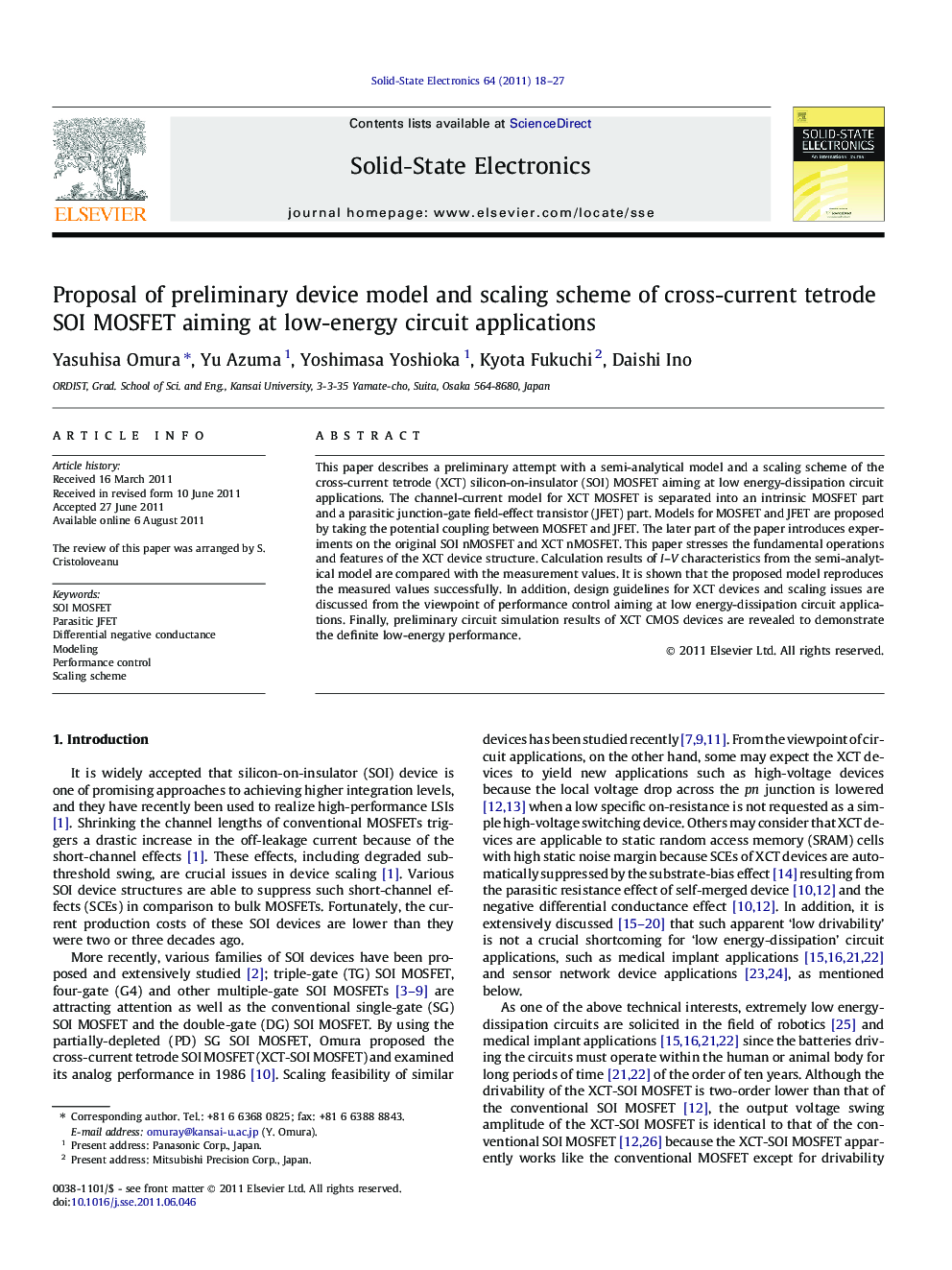| Article ID | Journal | Published Year | Pages | File Type |
|---|---|---|---|---|
| 747899 | Solid-State Electronics | 2011 | 10 Pages |
This paper describes a preliminary attempt with a semi-analytical model and a scaling scheme of the cross-current tetrode (XCT) silicon-on-insulator (SOI) MOSFET aiming at low energy-dissipation circuit applications. The channel-current model for XCT MOSFET is separated into an intrinsic MOSFET part and a parasitic junction-gate field-effect transistor (JFET) part. Models for MOSFET and JFET are proposed by taking the potential coupling between MOSFET and JFET. The later part of the paper introduces experiments on the original SOI nMOSFET and XCT nMOSFET. This paper stresses the fundamental operations and features of the XCT device structure. Calculation results of I–V characteristics from the semi-analytical model are compared with the measurement values. It is shown that the proposed model reproduces the measured values successfully. In addition, design guidelines for XCT devices and scaling issues are discussed from the viewpoint of performance control aiming at low energy-dissipation circuit applications. Finally, preliminary circuit simulation results of XCT CMOS devices are revealed to demonstrate the definite low-energy performance.
► A semi-analytical model and a scaling scheme of XCT SOI MOSFET are described. ► The target of XCT SOI MOSFET is low-energy circuit applications. ► Calculation results of I–V characteristics match the measurement values. ► Design guidelines for XCT devices and successful scaling prospect are described. ► Finally, low-energy performance of scaled XCT CMOS devices is demonstrated.
